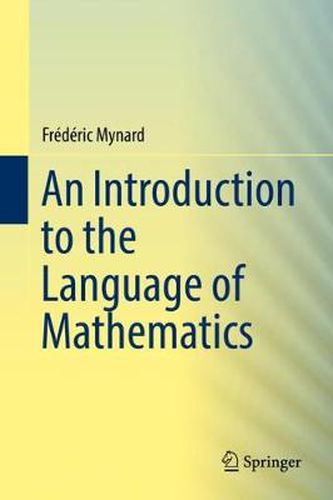Readings Newsletter
Become a Readings Member to make your shopping experience even easier.
Sign in or sign up for free!
You’re not far away from qualifying for FREE standard shipping within Australia
You’ve qualified for FREE standard shipping within Australia
The cart is loading…






This is a textbook for an undergraduate mathematics major transition course from technique-based mathematics (such as Algebra and Calculus) to proof-based mathematics. It motivates the introduction of the formal language of logic and set theory and develops the basics with examples, exercises with solutions and exercises without. It then moves to a discussion of proof structure and basic proof techniques, including proofs by induction with extensive examples. An in-depth treatment of relations, particularly equivalence and order relations completes the exposition of the basic language of mathematics. The last chapter treats infinite cardinalities. An appendix gives some complement on induction and order, and another provides full solutions of the in-text exercises.
The primary audience is undergraduate mathematics major, but independent readers interested in mathematics can also use the book for self-study.
$9.00 standard shipping within Australia
FREE standard shipping within Australia for orders over $100.00
Express & International shipping calculated at checkout
This is a textbook for an undergraduate mathematics major transition course from technique-based mathematics (such as Algebra and Calculus) to proof-based mathematics. It motivates the introduction of the formal language of logic and set theory and develops the basics with examples, exercises with solutions and exercises without. It then moves to a discussion of proof structure and basic proof techniques, including proofs by induction with extensive examples. An in-depth treatment of relations, particularly equivalence and order relations completes the exposition of the basic language of mathematics. The last chapter treats infinite cardinalities. An appendix gives some complement on induction and order, and another provides full solutions of the in-text exercises.
The primary audience is undergraduate mathematics major, but independent readers interested in mathematics can also use the book for self-study.